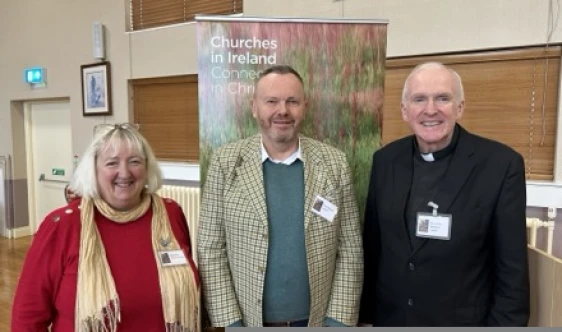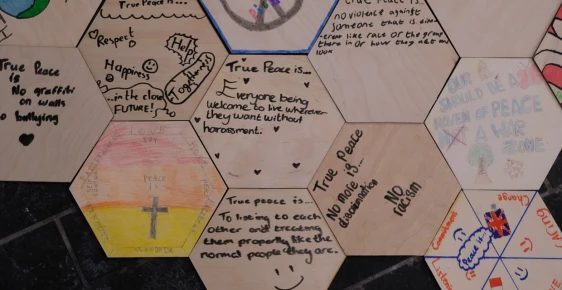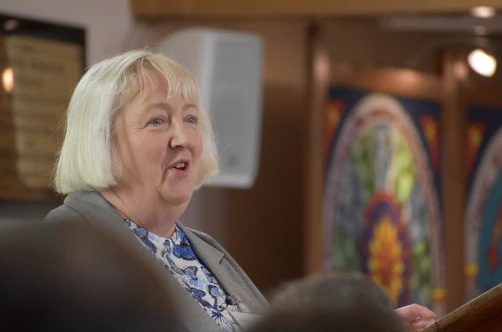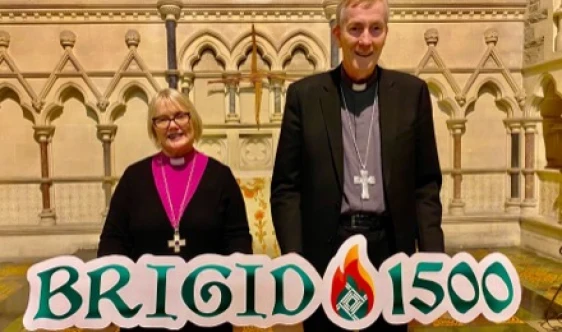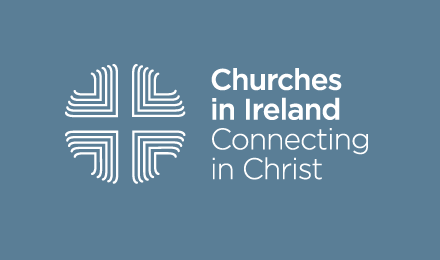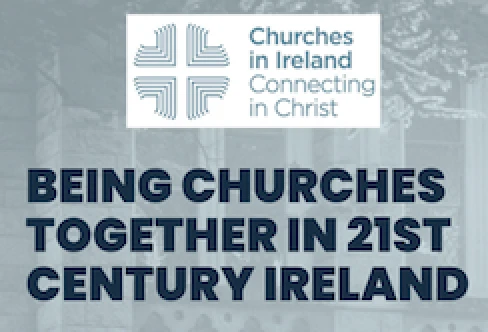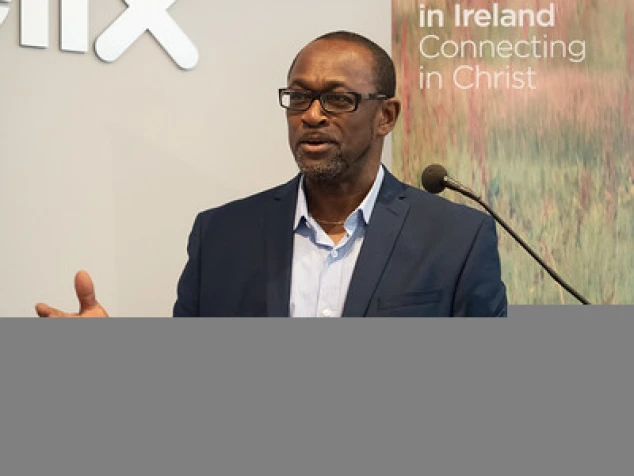
[Please note: these are edited notes of an unscripted presentation by Livingstone Thompson]
Introduction
First, I want to say thanks for the opportunity to be here and to share the reflection with you on this issue of working for an inclusive Ireland. Churches can do that together. Of course, the perspective in which I speak, has to do with my own experience of church in Jamaica, my experience of living in the Republic of Ireland and my experience of living in Northern Ireland. I also put a lot of weight on the experience of working with migrant communities in both the Republic and Northern Ireland. The work with these with community–based organisations has been focused on the issue of integration. One other piece of work that I think Philip KcKinley and Alan Bruce and I were involved with was the formation of minority ethnic–led churches in the Republic of Ireland and what that means for how migrant communities engaged with the churches.
It is important that the church at each moment would reflect and have that sense of self critique, and ask how well are we doing in regard to any of the issues that we’re facing. How well are we doing with respect to the kingdom of God.
The Ecumenical Question
A hundred years ago, the big, bold questions that the churches locally faced had to do with relationship, in terms of what to make for denominational relationships. It was bold, that Roman Catholics and Protestants were sitting down together, even worshipping together. These are bold steps when we look back, we may blush a little that that was a bold thing. And then to ask ourselves, what are the bold things for us to be doing now, one hundred years later?
About 50 years into that journey, there was a very important document that was formulated within the context of the World Council of Churches, the Toronto Declaration. What the Toronto Declaration said, basically, was that churches who work together did not have to accept each other as churches in every sense of the word. In other words, I work with you, but it doesn’t mean that I regard you as church as we are a church. It was a kind of a get out clause, but at least it allowed the churches to continue working together. Where we are now? Of course, the question may be slightly different.
Today, the Ecumenical Movement has shifted somewhat. The question is no longer how churches are working together, but a much more important imperative, is how are we dealing with individuals, some of whom are actually in the churches themselves? Can these individuals, who are actually with us in the pews, be accepted and included and have a sense of belonging in an equal way? An important question is what does inclusion look like? For the churches, and for the individual congregations, we represent, what does inclusion look like?
Inclusion is an issue for the churches because inclusion is an issue in the broader society. There is a growing sense, on both sides of the borders, and I have the advantage of living on both sides, that this question of acceptance and inclusion is a problem in the society.
From Diversity to Inclusion
Society on the island is changing, and it is changing in an irreversible way. Between 2000 and 2018, we had a significant movement of people into Northern Ireland. The net movement of individuals, about 41,000, has made a significant difference to the demography of the region. If we stay on the current trajectory, it is not a question of whether or not we will become much more diverse but, rather, at what speed will diversity have to be addressed, as an issue for society as a whole. Already we are seeing an increase in the request for interpretation, which is an indicator on the changes we are seeing. Towards the end of 2018, we had a significant increase in the population from Northern Africa, which meant that the request for interpretation for Arabic significantly increased. At the precise moment that we’re seeing that kind of movement in Northern Ireland, there is a significant change in how the society is engaging with individuals, and I’ll come to that in a moment.
When we look at the situation in Dublin, in the Republic of Ireland, we’re able to analyse movement in terms of the value being added in education of migrants. The indication is that the net migration is bringing added value in terms of the competence and the capacity to bring great benefits to the labour market. That is in the context in which we then try to get a grip of what is happening in terms of the increase in racism. In the Republic of Ireland, we’re seeing that some communities that are ill at ease with these changes and are pushing back. This is reflected in the number of incidents of racism.
It’s not only in the Republic of Ireland, that we’re seeing this pushing back. It is happening significantly, also in Northern Ireland. When Judge Marrinan did the Hate Crime Review, it was established that it is 17 times more likely to be the victim of racism than a victim of sectarian violence. And we’re seeing that every day.
One of those communities in Northern Ireland being affected is the Sandy Row area. There’s a business street where there have been a number of vacant shops for at least more than five years. They are now being occupied by a number of small businesses, with people from minority ethnic communities. Nearly every week, there is a smashed window or a fire. One shop, in fact, has had fires three times. Only the day before yesterday, there was another attack on the businesses and so they had to cease trading.
When we look at these incidents we notice a target of business being run by migrant from the continent of Africa. We have businesses being run by Chinese resident and we have businesses being run by people of North African descent, and we have businesses being run by Polish. The Polish and Chinese are not the object of these attacks. The North African businesses are the focus of continuous attack. We recognise that until there is a sense of acceptance, that these individuals belong to the society, there is going to be an issue of pushback. The attacks on businesses is not the only form of pushback by the community. With the increase incidents of racial attacks, the perception is that things are getting significantly more difficult for individuals in the society.
The question we have to ask is, what does this mean for the churches? I want to suggest that the issue of inclusion for the church is also a question that must be addressed. How are the churches in general, embracing diversity and how are the churches ensuring a sense of belonging to all people? If the matter relating to the experiences of those individuals, for example, in Belfast, is not of interest to the churches, then in a way it creates the space to say, these things are not important for the churches. It is therefore important that the churches, pay attention to what is happening in the wider society, because they are reflecting some of the attitudes that may be even present within the church.
When it comes to this matter of diversity, equality and inclusion, we’re no longer really wanting to talk about whether or not the community is diverse. I hope the churches are not priding themselves in saying ‘we have a diverse population within the church’, because the question has moved significantly on to whether or not there is a sense of belonging.
I invite you to reflect a little bit about what kind of accommodation your own congregation or your church has made, because there is a recognition that accommodation must to be made, in order for individuals to be included.
Getting a grip of culture
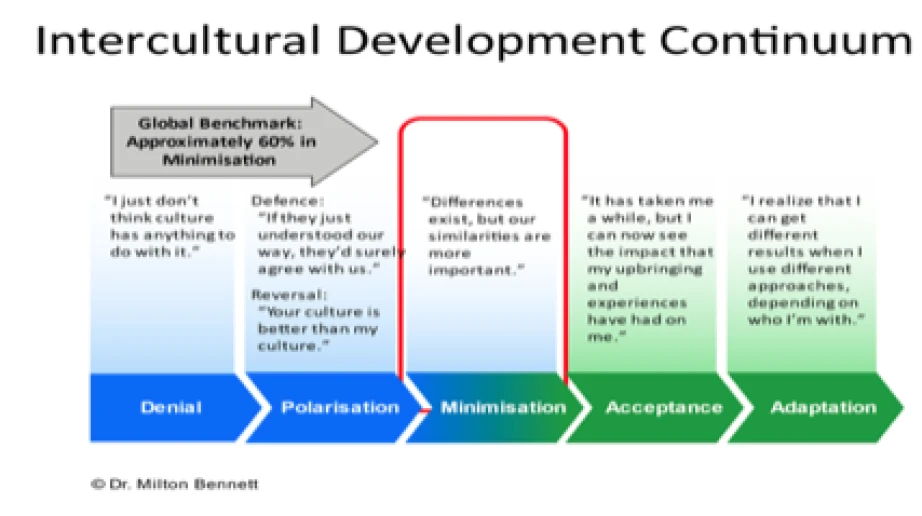
Fig. 1
The issue of cultural expectations is an important one for churches to reflect on, in a society that is or in a community that is concerned about inclusion. Some people would be of the view that culture has nothing to do with it. We say those individuals, as far as the intercultural competence continuum is concerned (See Figure 1 above), are in the denial phase.
There are those who would say that, if people would just understand us, they’d surely agree with us. In would seem that most of us are in the minimisation phase, where they recognise differences, but the stress that things that unite us are much more, so we don’t need to think about the differences. Minimisation makes relative the things that are in fact important for understanding the decisions people make.
However, we need to move further along this continuum to acceptance and adaptation. People have problems with the idea of adaptation, because there is the question – “Why should we change for others who are coming into society or into the community?” That’s a misunderstanding of adaptation. Adaptation has to do with mature, responsible flexibility, to be able to recognise the adjustments that may be made in order to ensure and promote inclusion and belonging.
How Cultures tend to function
Let’s understand for a minute how culture functions – and it’s important that we see congregations, as cultural communities, because that’s what we are. I had the opportunity to work with a colleague, and we did a piece of work over two or three years. And as part of this, we had two questions for about 1500 or so individuals who participated in the sessions. We showed them a video of a community in Papua New Guinea. We wanted them to imagine going there and that they had to live in there for some time. The questions were, “what would you give up and what would you keep, if you were going to be living there for some time? The responses they gave reinforced that approach to culture that we have come to appreciate and understand, the iceberg model of culture.
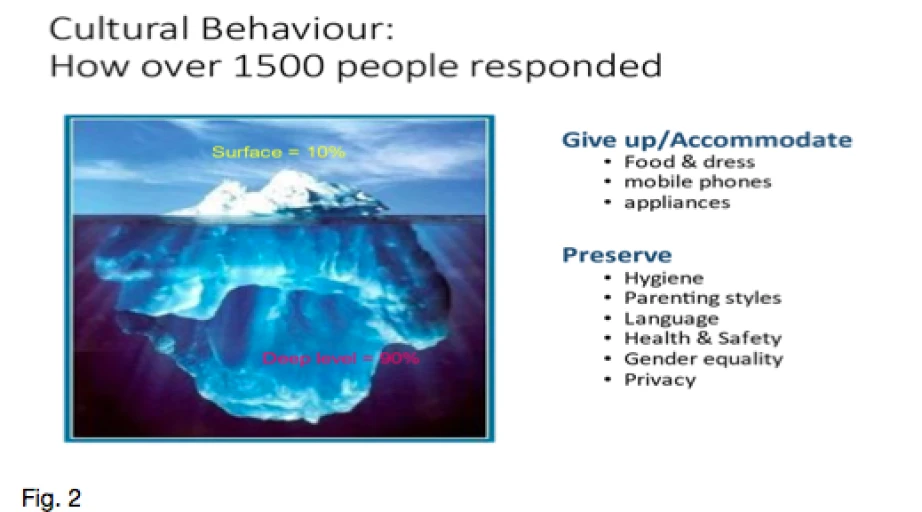
We noted that people are, in general, quite prepared to give up what we call the superficial things, the things that are visible, like those are at the top of the iceberg: food, dress, appliances, and so on, People are quite prepared to give up those things in order to live in a different context. However, the things that people are inclined to keep are the deep–level cultural norms, beliefs and values. We ask them, ‘what if you are going to the United States, what things would you be keeping or want to quit?’ This observation actually happened in Ireland and Northern Ireland, by the way. Consistently, the things that are being kept are things that are below the surface in the iceberg image. This helps us to understand that individuals will want to keep those things on which they have relied for survival, and that’s literally what culture is, the things needed for survival. The deep–level things — the norms and the values by which they have survived, they will want to keep those things for future survival.
It is important that as we engage people from a different cultural context, we understand that they will behave in the same way in which we will behave, if we move to different cultural contexts. Those things that are important we keep and that individuals will not, because they have moved to a different context, give up those deep level things. It will take time, and it will also take them through that process of adaptation, to be able to adjust their lives. Therefore, we should not expect that the individuals will immediately do things according to local norms and local values. It will not happen. It doesn’t happen. That is not how culture works. When we meet the individuals from Nigeria, or from Sudan, or when we meet the individuals in the United States, keep in mind that the cultural norm and values most important to them are not visible; they are the things below the surface. Those things below the surface affect their thinking and problem–solving. It is in these that notions of integration subsist. It is important, then, that churches come to grips with culture.
There are some important cultural things in churches which, as important as they are, as holy as they are, they are the very things that create the barriers to inclusion. It’s important for us to decide whether these things are so important that we should not even think about them changing. We must decide if they need to be kept in an exclusive way. Churches need to ask: do we need to keep these things because they’re necessary for our survival, or do we give up or relac some things so as to foster inclusion?
There are religious structures and religious practices that individuals would not think about changing for any reason at all. There are the religious traditions which are associated with identity. Even though these traditions are dynamic, and always in a process of being developed, some define them as permanent realities and do not see new people coming into the church as having a role in contributing to their development.
The question of what it means to be Moravian, of course, and what it means to be Presbyterian, or what it means to be Catholic, can it be affected by people who have come from other contexts defining themselves in the same way. An Irish understanding of Presbyterian, of Moravian and or Methodist or Catholic: can that be adjusted? We have people from a different context who use those designation as self–definition. The truth is, it will happen over time but the question is whether or not we’re prepared to engage it as part of a dialogical process.
Getting a grip of bias
There is one final issue that churches need to get to grips with. So, I said churches need to get a grip of culture, and understand themselves as cultural communities, which are inclined to be exclusive.
There’s also the issue of bias in churches. We can understand biases through the work of Kahneman, who has given us an understanding of systems in our thinking.
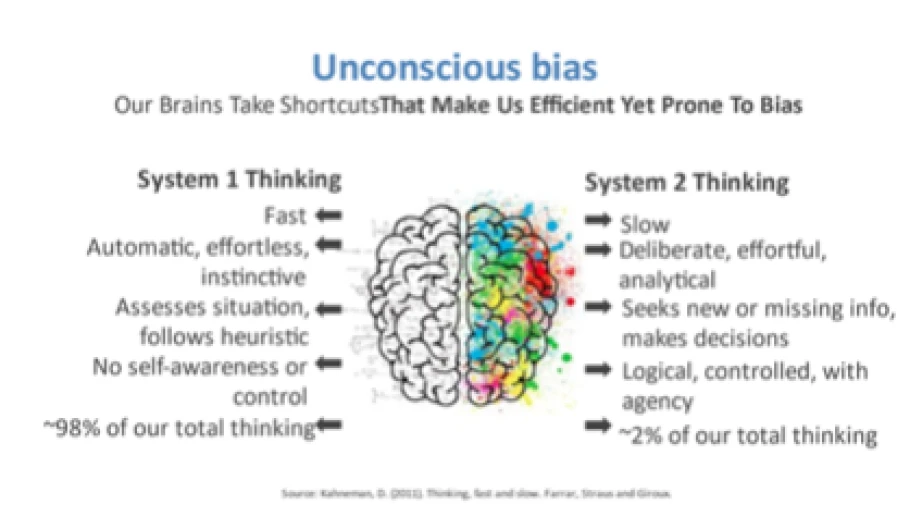
Fig. 3
Kahneman use the term System 1 to describe the fast, automatic decisions we make. It has to do efficiency and easy, accessible descriptions and definitions. System one is in operation when do simple calculations 2×2 = 4. You don’t even need to think about it because the answer is simply retrieved from where it is stored in our memory. We simply draw from the storage to give the answer. However, if I were to ask you a much more difficult question mathematically to say, what is the square root of 65 × 14 divided by 23? What is the answer? It doesn’t come readily. You need system 2 to be able to work out that problem. System 1 is fast, and it’s operating all the time. System 2 is deliberate and keen not to make mistake.
What’s the relevance of this to what are we talking about? It is this: according to the research by Kahneman, 95 to 98% of our thinking happens in System 1. This means we are operating from our biases most of the time. When we meet an individual who is from Sudan, for example, our System 1 thinking immediately goes into operation and we draw on all the biases and all the stereotypes to form ideas about the person. Without realising it, we are loading those notions on the individual and it is affecting the way in which we are making decision about them. One of the challenges, then, is to be able to learn how to slow our thinking down so that we’re not depending on our biases and our prejudices all the time.
There are a number of those biases that are operating all the time and it’s important that we understand that they are there. It’s not as if we can say we don’t have them. It’s a popular thing for individuals to say they don’t have biases, that they operate with stereotypes. The point is that we have them. The challenge we have is how do we slow them, down, how to mitigate these biases.
In availability bias, we draw on the last thing we heard about or and the most impressive things about group of people, say Americans. The next American we see we are inclined to automatically apply those stereotypes that that individual. It’s not that we are choosing to do that, it’s happening without choice.
Another bias, affinity bias, is a very popular one for churches, because it’s about advocating for individuals with whom we have some sense of connection and empathy. When the Ukrainian war started, one of the things often said by the reporters concerning the refugees who are coming from Ukraine, was, “And imagine they were people like us.”. We show empathy because of some sense of affinity.
Confirmation bias is when we are looking for those things which connect with what we believe. This is ever–present theological and philosophical conversations, when we’re not prepared to listen to points of view that do not reinforce what we hold.
The question then, is not whether or not we have these biases but how are we learning to mitigate them, and to understand when we meet an individual from a different cultural context, it is already operating.
Conclusion
In the context of churches working together for inclusion, a task for churches is to be aware of culture and of biases. These affect how we make ourselves open to other people and the ideas we hold about them.
